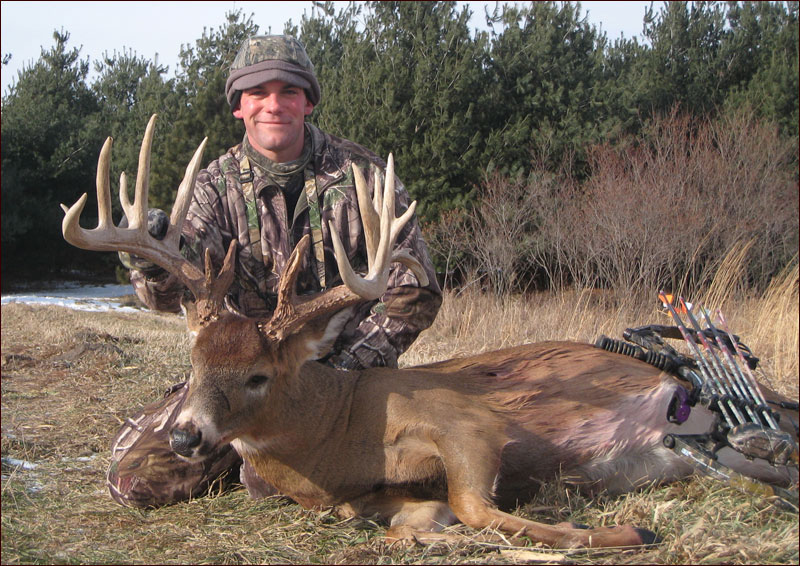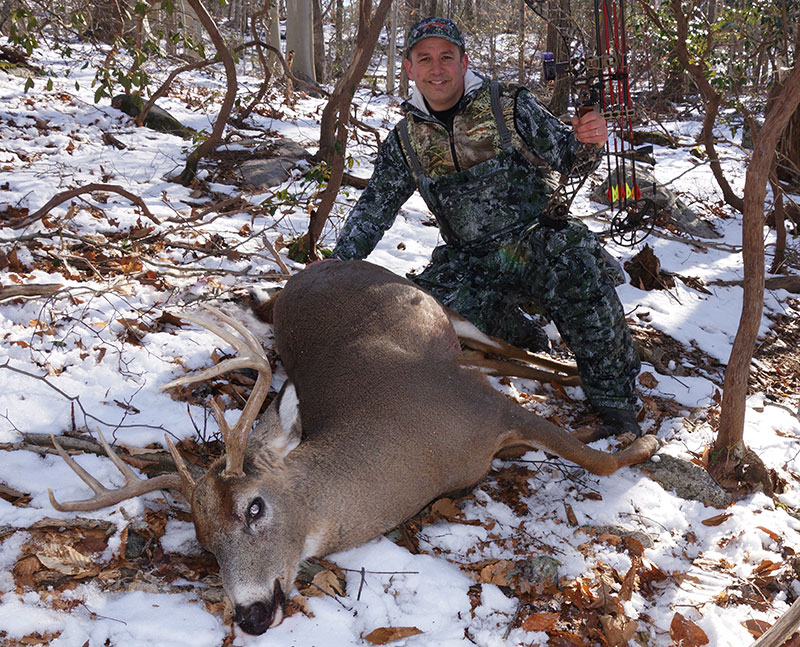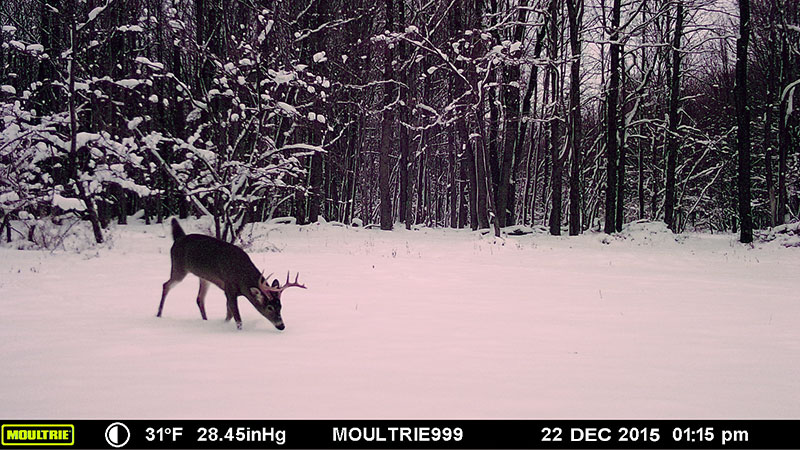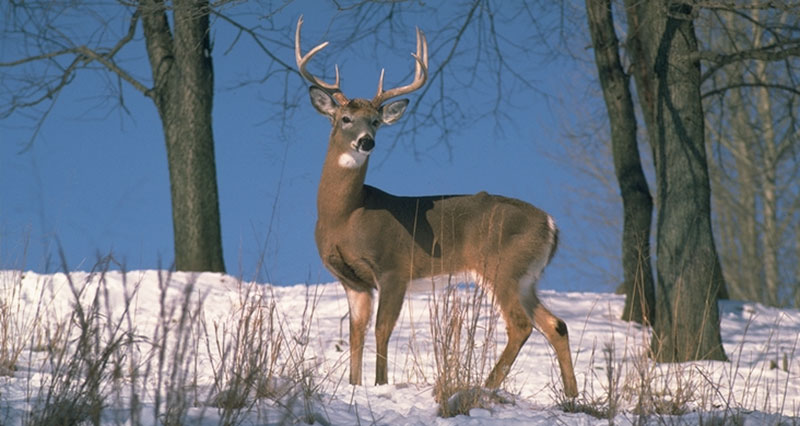Bowhunting in Winter
Is late season the best time to kill that big buck?

By Pat Lefemine
Christmas is over and even if you still have a tag, you are probably ready to hang up your bow for the year, right?
Well, not so fast.
Ask Charlie Rehor and his son, Matt what they think of the late winter/January season? Both have killed several monster bucks in late season including a 200+ inch giant that showed up to feed on food plots planted specifically as a winter food source.

And it’s not all about hunting, it’s also about scouting for next year too. So here’s my top five reasons why late winter has always been my favorite part of year for a bowhunter.
Easier to fill your buck tag
The number one reason to consider the late December and January season is because it may be the easiest time of year to kill that big buck you identified in the early season.
This may sound strange; everyone knows that November is the best time of year to kill a buck, right? Well, not necessarily. November is a magical period for hunting bucks, but it can also be frustrating since that big buck you patterned all year long is on the move and will not sit still. Even if he does show up, he will be rutting and may not stand still long enough for a shot.

Assuming your buck has made it through the gun season he will continue to breed into December but will slowly lose interest in sex and return to focusing on food and security. If your property has both, he will likely return and will be far more consistent than ever before. Knowing these patterns is critical.
Far less competition
For public land hunters, this aspect is very important - but even for private lands it makes a big difference as well. There will be far less hunters participating in the late season. In my experience, I am the only hunter in the woods. That allows me to pattern a buck far more effectively than any other period of the hunting season.
But even if you’ve filled your tag there’s a lot of things to do during the late season
Trail Camera Surveys
My trail cameras stay out throughout February. There is one very important reason for this. I want to know what bucks survived the season!
Every year on my NY property I become obsessed with identifying all my resident bucks. For the 2016 season I ID’d 18 different bucks ranging in age from 1.5-5.5. My trailcam surveys teach me a lot about these deer and during the long rifle season I am constantly communicating with my neighbors to see if any of them have been killed. But I won’t hear about them all so that’s where my trailcams come in. I have two late season food plots and I move several trail cameras to these areas during the winter.

Now, it’s not always a guarantee that a trail camera will capture your big buck, and no photo doesn’t necessarily mean he’s dead. But if you do capture his photo in January that is 100% confirmation that he survive - at least until that point. Seeing your top buck show up after deer season is almost as important as that first photo of him captured in late spring.
Post Season Scouting
I guarantee you the guys who capitalize on the winter season each year are also using this time to scout for future winters. For the guys who are blessed with snow, the late season provides you the ability to learn more about deer than any other time of the year.
The way it works is simple; One or two days after a fresh snowfall we will walk our property and look for tracks. The tracks will tell you a lot - like where the deer are bedding, their travel routes, and where they like to feed during the winter. In areas with lots of snow these patterns will be consistent from year to year. Â Tip, bring a roll of flagging tape since this is the perfect time to identify treestand locations for next season.
Habitat Improvements
For those of you who enjoy managing hunting properties for whitetails and deer hunting, winter is a critical time for some simple chores.
The most common one is felling trees. Everyone who has ever timbered knows that winter is the best time to do this. The trees are defoliated and the cold air makes it far more comfortable given the physical exertion associated with cutting. Be sure to keep safety a priority and never drop trees in deep snow.
I also mark trees for future clearing, flag areas that I want to clear with equipment, and cut in travel routes and other activities. One of my favorite activities is releasing apple trees while they are dormant. This process involves cutting hardwoods and softwoods around our mast and fruit trees to maximize their access to sunlight.





